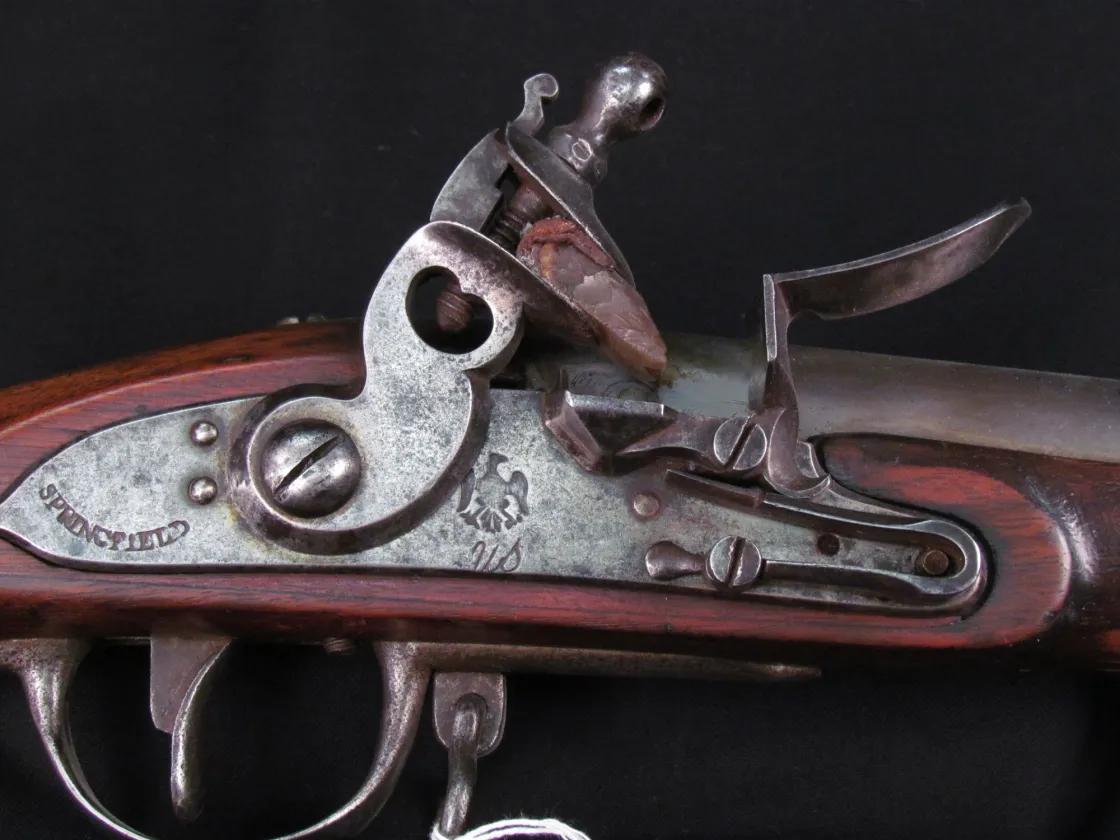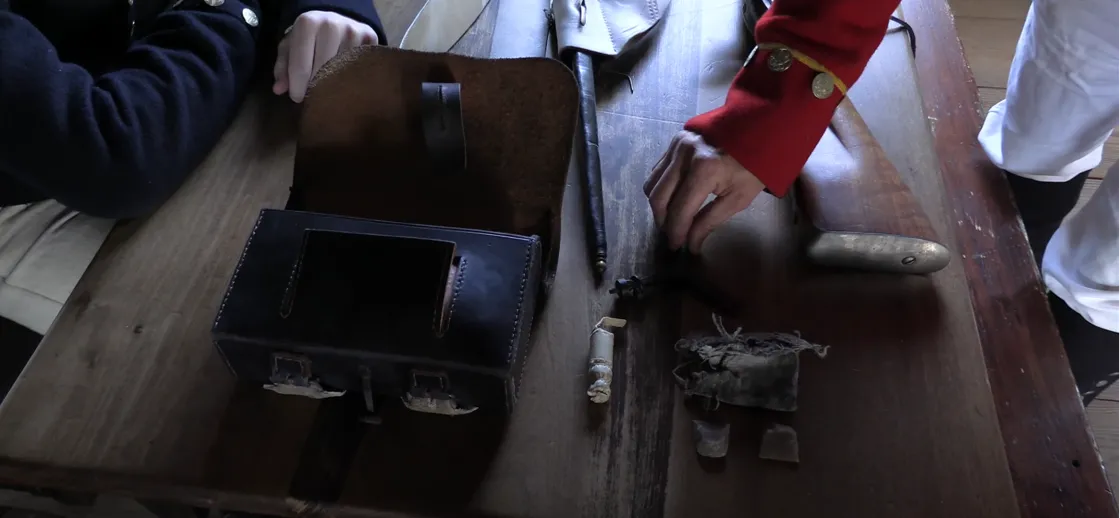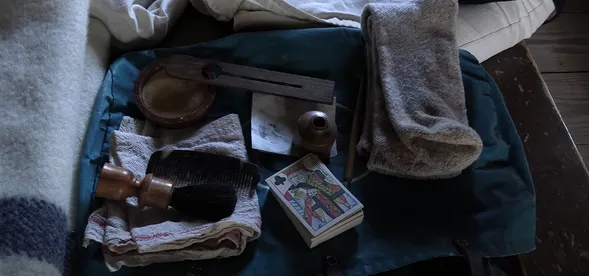Equipment in the War of 1812

"Battle of North Point" by Don Troiani
The equipment used during the War of 1812 was relatively similar to equipment used during the Revolutionary War. However, some technological advancements were made, and the War of 1812 was one of the first wars in which almost all items that were issued to soldiers were manufactured and created in the new nation.
Firearms, Weapons, and Related Equipment
Most of the firearms used by soldiers in the War of 1812 were small arms weapons. Flintlock firearms were widespread, and the most common firearms used were the Springfield Model 1795 musket and Harper’s Ferry 1803 rifles. The Springfield Model 1795 musket was produced by inventor Eli Whitney, the creator of the cotton gin, based the design of the firearm heavily from the French Charleville Model 1763 musket that was used during the French and Indian War. One of the newer technologies to be developed in firearms technology was the use of rifling as seen in the Harper’s Ferry 1803 rifles. Rifling was a feature within the barrel of the firearm that gave the projectile a spin, which led to greater accuracy at longer distances. However, these rifles could not have bayonets attached to them, which caused the 1795 Springfield musket to remain as the most prominent firearm of the War of 1812.

All firearms in the War of 1812 utilized a flint-lock system of firing. Flintlock firing mechanisms were firearms that used a shard of flint (a stone that can easily create fires) to light gunpowder in a pan, which then ignited the gunpowder poured inside of the firearm, which launched the projectile. Flintlock firing systems were first introduced in France in the late 1500s to early 1600s. They were later replaced in the United States by the percussion cap system in the Mexican War and were widespread in the Civil War.

Besides the firearms themselves, soldiers carried items that helped them efficiently reload and maintain their firearms. These items included a leather cartridge box which contained the cartridges that were loaded into the firearm. These cartridges were wrapped in paper, and had 125 grains of gunpowder, as well as the projectile itself. Extra pieces of flint were also stored in the cartridge box in the case of the flint wearing down too much. A cloth, as well as a musket tool were also included in the cartridge box to clean, maintain, or repair the firearm.

Other weapons that some soldiers carried were bayonets, swords, and pistols. Pistols were used for extremely short ranges of thirty feet or less. They used similar cartridges and utilized flint in their firing mechanisms. Bayonets were most commonly attached to the end of muskets and were used for close quarters engagements. Swords were often utilized by officers and cavalry soldiers.
Clothing and Personal Effects
U.S. soldiers were issued a knapsack that included all their personal effects. For clothing and cloth items, soldiers were issued a blanket, linen shirts, linen trousers, extra socks, fatigue blouse, and fatigue cap. Fatigue blouses and caps were used when not engaged in combat and mostly used for daily drilling and everyday wear. These cloth items were also used primarily in the summertime. Fatigue blouses were also used for when weather conditions were poor, such as rain. Soldiers would wear the fatigue blouses over their uniforms to prevent rain from getting on their uniforms. Soldiers were also issued their helmets; a tall leather hat called a brain cooker. These hats were uncomfortable, but they made soldiers appear taller when facing the enemy.
U.S. soldiers were also issued wool items. Primarily, their uniforms were made of wool. However, soldiers also received wool trousers and a wool waistcoat. Mostly worn during the winter months, these items would keep soldiers warm while off duty and in the barracks.

The soldiers also received a knapsack of items that were used as a personal locker. These items included items for shaving, such as a razer, shave brush, shave soap, and shaving bowl. There was also a comb, a deck of playing cards (despite gambling being illegal in the barracks), a quill pen, and ink well. These items were crucial in ensuring that the soldiers were well equipped to successfully carry out their duties as a soldier.





